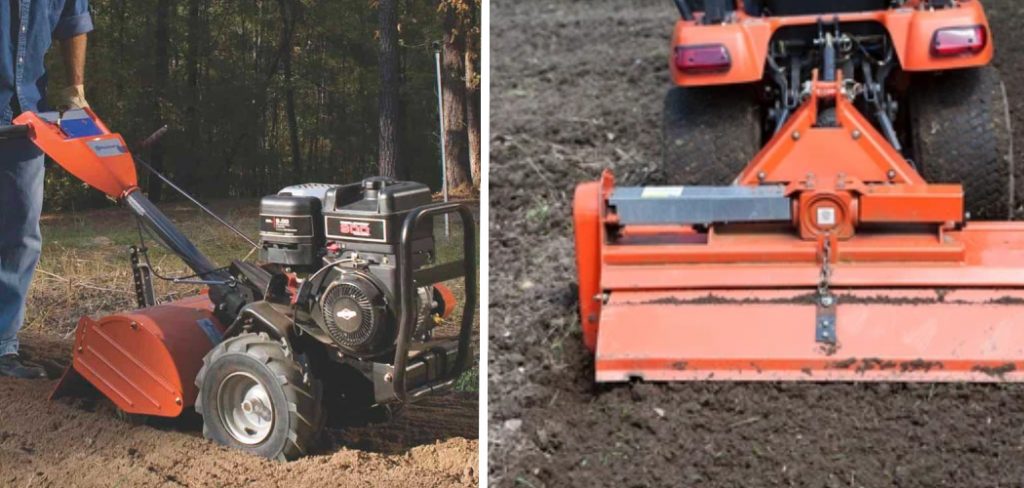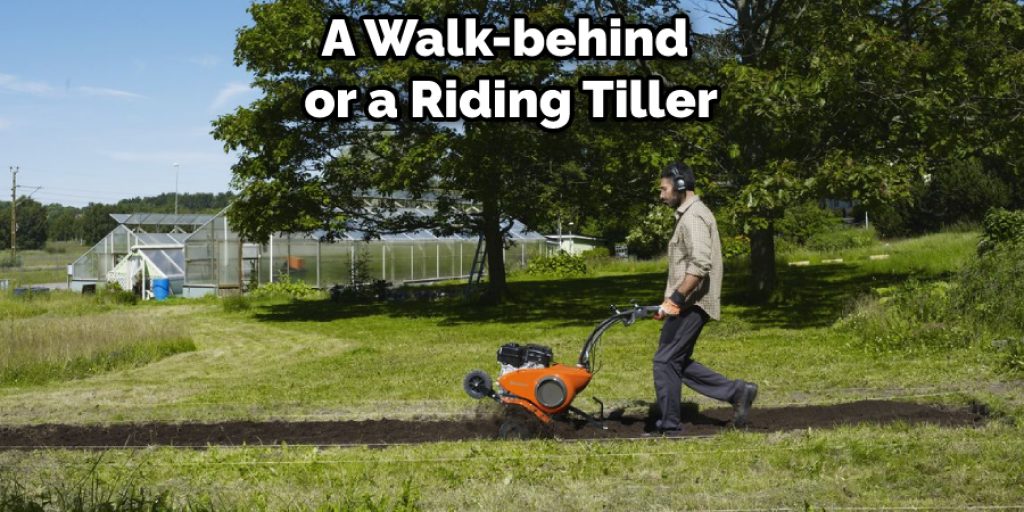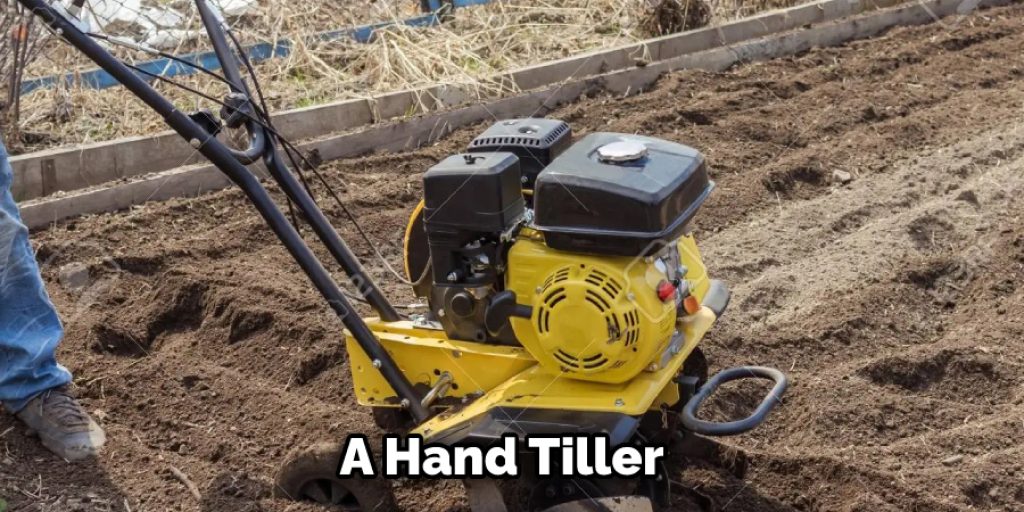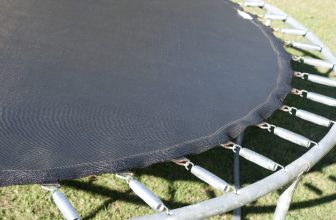How to Use a Tiller to Remove Grass
When most people think of tillers, they think of heavy equipment used to break up soil for planting. However, a tiller can also be used to remove grass and other vegetation from a surface.
Although this can be time-consuming, it is worth it if you want to get rid of your grass carpet and replace it with something else.
In this blog post, I will outline the effective methods to remove your grass using a tiller. Keep reading! You’ll get the answer to your question, “how to use a tiller to remove grass?” soon.

Benefits of Using Tiller to Remove Grass
A tiller can save you time and energy if you have a large lawn. It can remove grass from any area, including your driveway, sidewalk, or patio. A tiller can also help to aerate the soil, which is important for plant growth. In addition, a tiller can help loosen compacted soil, making it easier for roots to penetrate. It is very much effective in removing grass from your lawn.
Step-by-step Guideline on How to Use a Tiller to Remove Grass
You have to maintain your tiller regularly. Break new ground with a tiller before planting. This will ensure your plants get nutrients and grow properly. The following is a step-by-step guide on how to use a tiller to remove grass:
Step 1: Select the Right Tiller
There are many different types and sizes of tillers available on the market, so it is important to select the one that is best suited for your needs. For example, a hand-held tiller would be sufficient if you have a small lawn. Otherwise, you have to choose between a walk-behind or a riding tiller.
Walk-behind tillers are best suited for larger lawns while riding tillers are more appropriate for very large lawns.

Step 2: Prepare the Area to be Tilled
It is very important to clear the area to be tilled of any debris, such as rocks or sticks. This will help prevent damage to the tiller and make the job easier. You should also mark areas where you do not want the tiller to go, such as near flower beds. And also, be sure to remove any grass or weeds in the area to be tilled.
Step 3: Start the Tiller
Once you have prepared the area, you can start the tiller. Be sure to read the manufacturer’s instructions carefully before operating the tiller. You will need to engage the blade, which is usually done by pulling a lever or knob.
Then, start walking forward while guiding the tiller. The tiller will do the work of breaking up the soil and removing the grass. Riding tillers are operated by sitting on the seat and using the controls to move forward or backward.
Step 4: Till the Area
As the tiller moves forward, the blades will rotate and dig into the soil. Therefore, you will need to keep moving the tiller back and forth to the entire area. Remember that you should not go too deep, as this can damage the tiller.
A good rule of thumb is to till the soil to a depth of about 6 inches. You may need to make several passes to achieve this depth.

Step 5: Turn off the Tiller
Once you have finished tilling, you can turn off the tiller and unplug it from the power source. Make sure to clean the tiller before storing it. You can remove any grass or soil from the blades using a brush. Be aware that it is very important to clean the tiller after each use to prevent rust and corrosion.
Step 6: Clean up the Area
The last step is cleaning up the area by removing any debris the tiller has stirred up. This includes rocks, sticks, and clumps of soil. You can then rake the area smooth and replant grass seed if necessary. The cleaning area is a vital step, and you should not skip it. Otherwise, it will take more time to replant the grass.
Step 7: Storage
When you are finished using the tiller, it is essential to clean it up and store it properly. First, remove any debris from the blades and the engine. Then, oil the moving parts and wipe down the entire machine. This is to ensure that it is protected from rust and corrosion.
Once the tiller is clean, you can store it in a shed or garage. Be sure to keep it in a dry and well-ventilated area.

Tillers can be a great help in removing grass from your lawn. However, follow these steps carefully to get the best results. Regular maintenance of your tiller will also help to extend its lifespan.
Safety Precautions Before Using a Tiller to Remove Grass
- Read the operator’s manual before using the tiller.
- Wear proper safety gear, including gloves, goggles, and ear protection.
- Inspect the tiller before each use to ensure that it is in good working condition.
- Clear the area of debris and rocks before using the tiller.
- Be aware of your surroundings and watch for obstacles while operating the tiller.
- Do not operate the tiller near power lines or other electrical hazards.
- Keep children and pets away from the area while using the tiller.
- Do not allow anyone to ride on the tiller while it is in use.
- Do not use the tiller while under the influence of drugs or alcohol.
Use common sense and follow all safety precautions to avoid accidents and injuries while using the tiller.
How Far Down Does a Tiller Go?
A tiller can go as deep as you need it to, depending on your model. Some tillers will have a depth adjustment lever or knob that allows you to control how far down the tiller goes. When removing grass, you’ll want to set the depth so that the blades barely touch the ground. This will ensure that you’re only removing the grass and not damaging the soil beneath.
What Kind of Tiller Do I Need?
The type of tiller you need will depend on the size of your yard and the amount of grass you need to remove. For small yards, a hand tiller or electric tiller should suffice.
For larger yards, you may need a gas-powered tiller. This will give you the power and torque you need to remove large amounts of grass quickly.

How to Use a Tiller?
Using a tiller is relatively simple. Just follow these steps:
Start by setting the depth adjustment knob or lever to the shallowest setting. Next, place the tiller on the ground and start it up. Use the handles to guide the tiller back and forth across the area where you want to remove grass. After that, stop periodically to empty the grass catcher or bag.
Once you’re finished, turn off the tiller and unplug it from the power source.
Should I Wet the Ground Before Tilling?
It’s generally a good idea to wet the ground before tilling, especially if it’s dry. Soaking the ground will help make it easier to cultivate and help avoid too much dust. However, working in a particularly muddy or swampy area, you may want to wait until the ground dries out a bit before tilling.
What Type of Soil is Best for Tilling?
Tilling is most effective in loose, sandy soils. However, if your soil is very dense or clay-like, tilling may not be as effective. In these cases, you may need to use a rototiller or other power tool to break up the soil before you can till it by hand.
How Often Should I Till My Soil?
How often you need to till your soil will depend on the type of plants you’re growing and the condition of your soil. Generally, it’s a good idea to till your soil every one to two years.
If you’re growing crops that require a lot of nutrients, you may need to till your soil more frequently. And if your soil is very compacted or has a lot of clay, you may need to till it more often.
What is the Major Problem With Tilling?
The major problem with tilling is that it can cause soil compaction. Soil compaction can reduce the amount of oxygen that gets to plants’ roots, making it more difficult for water to penetrate the soil. Additionally, tilling can destroy soil structure, which can lead to erosion.
If you decide to till, it’s essential to do so carefully. Use a light touch and avoid going over the same area multiple times. In addition, try to work when the ground is moist, as this will help reduce compaction.
When tilling, it’s also important to be aware of any buried utilities or other objects that the tiller could damage. If you’re not sure where these objects are located, it’s a good idea to contact your local utility company for help.
Conclusion
Tillers are a great way to remove grass from your lawn quickly and easily. Just be sure to follow the manufacturer’s instructions carefully and take the necessary safety precautions. Also, don’t forget to clean up the area afterward.
If you read the article, now that you know How to Use a Tiller to Remove Grass, you can start creating the lawn of your dreams!




